Each individual work in this series is a graphical interpretation of a poem, through a combination of barcodes or, for the 4th one, QR-codes. Each verse in the poem is converted, then they are all laid out using Adobe Illustrator to proportionally fit the intended size of the medium. This in turn is exported as a set of coordinates that can be measured and drawn on the medium using a lead pencil. Finally, the drawing is painted according to a predefined set of rules.
This work uses an industrial technique to interpret an emotional language. Text is considered as a raw material that can be used, interpreted and transmogrified to create new aesthetics shapes.
Time itself becomes an important element of a work that is evocative of Roman Opalka in its execution and Art & Language for its goal.
The complete process for the first 4 works is the object of a freely downloadable e-book (using the Apple iBook format) that is considered integral to the work.
This work uses an industrial technique to interpret an emotional language. Text is considered as a raw material that can be used, interpreted and transmogrified to create new aesthetics shapes.
Time itself becomes an important element of a work that is evocative of Roman Opalka in its execution and Art & Language for its goal.
The complete process for the first 4 works is the object of a freely downloadable e-book (using the Apple iBook format) that is considered integral to the work.
Chacune des œuvres qui composent cette série est une interprétation graphique d’un poème, sous la forme de codes-barres ou de flashcodes (pour la quatrième). Chaque vers des poèmes retenus est converti, puis l’ensemble du poème, « mis en page » sur ordinateur pour l’adapter à la taille du support, est minutieusement dessiné au crayon sur la toile avant d’être peint.
L’intérêt de ce travail est de détourner un procédé technique comme élément d’interprétation d’un langage sensible. Le texte est considéré en tant que matériau qui peut être mis en abyme pour générer de nouvelles formes esthétiques.
Le temps lui-même devient un élément prépondérant d’un travail évocateur de celui de Roman Opalka pour sa réalisation et Art & Language pour sa finalité.
Le processus complet création des 4 premières œuvres fait l’objet d’un livre électronique (au format Apple iBook) qui fait partie intégrante de l’œuvre.
POETRY #1: COLERIDGE
2016, acrylics on canvas, 130 x 210 cm
Each of the 54 verses from Coleridge's "Kubla Khan" poem have been converted to barcodes, using the Code39 format. This resulted in 40.534 rectangles with a height of 23mm and widths comprised between 1 and 8.6mm, that were measured and reproduced on the canvas, before they were painted with random colors, without paying attention to the alternating black and white bars.
The making of this work was documented day by day in a facebook album.
Les 54 vers du poème « Kubla Khan » de Coleridge sont convertis en autant de codes-barres, soit 40 534 rectangles de 23 mm de haut et de largeurs comprises entre 1 et 8,6 mm, qui sont mesurés et dessinés sur la toile avant d’être peints sans tenir compte de l'alternance de noir et de blanc des codes-barres.
L'intégralité du processus est détaillé au jours le jour dans un album facebook.
POETRY #2: CARVER
2016, acrylics on canvas, 130 x 130 cm
The excess canvas that was cut off from the previous "Coleridge" painting were sewn together so as to create a sort of internal frame inside this painting's canvas. The drawing process is otherwise the same, but here the alternating blacks and whites of the bars generated from the far shorter "Morning, thinking of Empire" poem by Raymond Carver were honored, using colors with a large addition of either black or white paint. To offset the somewhat pastel aspect of this painting 4 purely digital variations were created, each using random colors taken from different professional Color Books (Pantone Coated, Focoltone, Toyo and Trumatch). They can be printed at the 60x60 cm format.
The making of this work was documented day by day in a facebook album.
Les chutes de la toile sur Coleridge sont cousues de façon à faire une sorte de cadre intérieur sur le support de cette toile. L’alternance des noirs et blancs des codes-barres générés d’après le poème « Morning, Thinking of Empire » sont respectés en utilisant des couleurs additionnées d’une grande quantité de noir ou de blanc. Pour compenser cet aspect pastel, 4 variantes purement informatiques et destinées à être imprimées au format 60x60 cm sont envisagées, qui utilisent des couleurs aléatoires au sein de nuanciers professionnels (Pantone coated, Focoltone, Toyo, Trumatch).
L'intégralité du processus est détaillé au jours le jour dans un album facebook.
POETRY #3: BUKOWSKI
2016, acrylics on canvas, 130 x 130 cm
The barcodes were drawn at a smaller size than the frame's on the canvas before it was stretched on the frame. Stretching the canvas afterwards creates deformations of the drawing. It was painted using a palette of reds and its variations, however with less contrast than for "Carver".
The making of this work was documented day by day in a facebook album.
Le dessin des codes-barres est reproduit, à un format plus petit que le châssis, sur la toile non tendue. La tension de la toile crée des déformations du dessin. L’alternance des blancs et noirs est respectée, mais moins marquée que pour « Carver », et la palette est restreinte à des rouges et leurs dérivés.
L'intégralité du processus est détaillé au jours le jour dans un album facebook
POETRY #4: FATE
2016, acrylics on canvas, 130 x 130 cm
The 3 very short verses in the haiku "Fate" (by myself, I'm afraid) were converted as QR-codes. It is possible, when creating a QR-code, to leave an empty space at the center. I used this possibility for the 2 first verses and inserted the second then third QR-codes inside the space. The base square for the 3rd square measures a mere 2mm.
The making of this work was documented day by day in a facebook album.
Les 3 courts vers du haiku « Fate » sont convertis en flashcode. Ceux-ci pouvant comprendre un espace vide au centre destiné à recevoir, par exemple, un logo, le second et le troisième vers viennent s’imbriquer à l’intérieur du précédent. Le carré de base du troisième vers mesure seulement 2 mm.
L'intégralité du processus est détaillé au jours le jour dans un album facebook.
POETRY #5: GINSBERG
2017-2023, digital prints on canvas, 250x5500, 250x5000 and 250x120 cm; acrylics on 10 canvasses of 50 x 50 cm
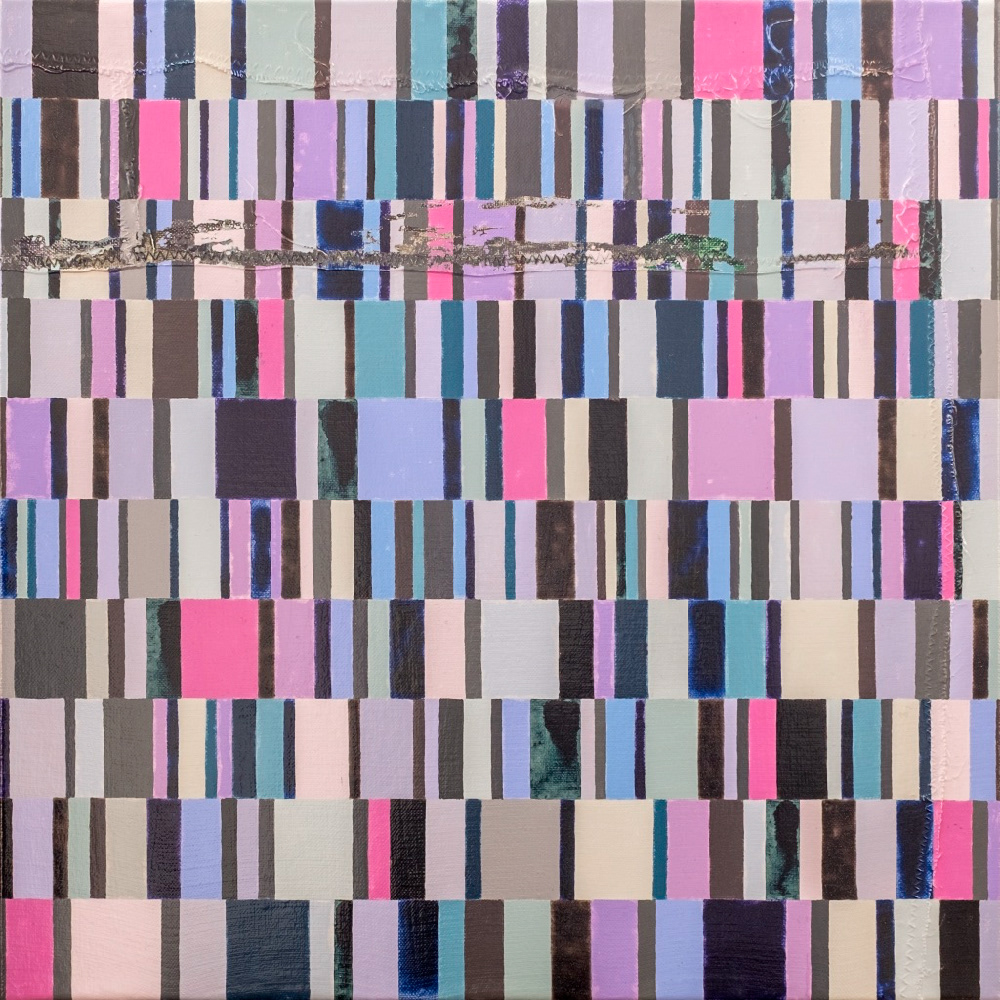

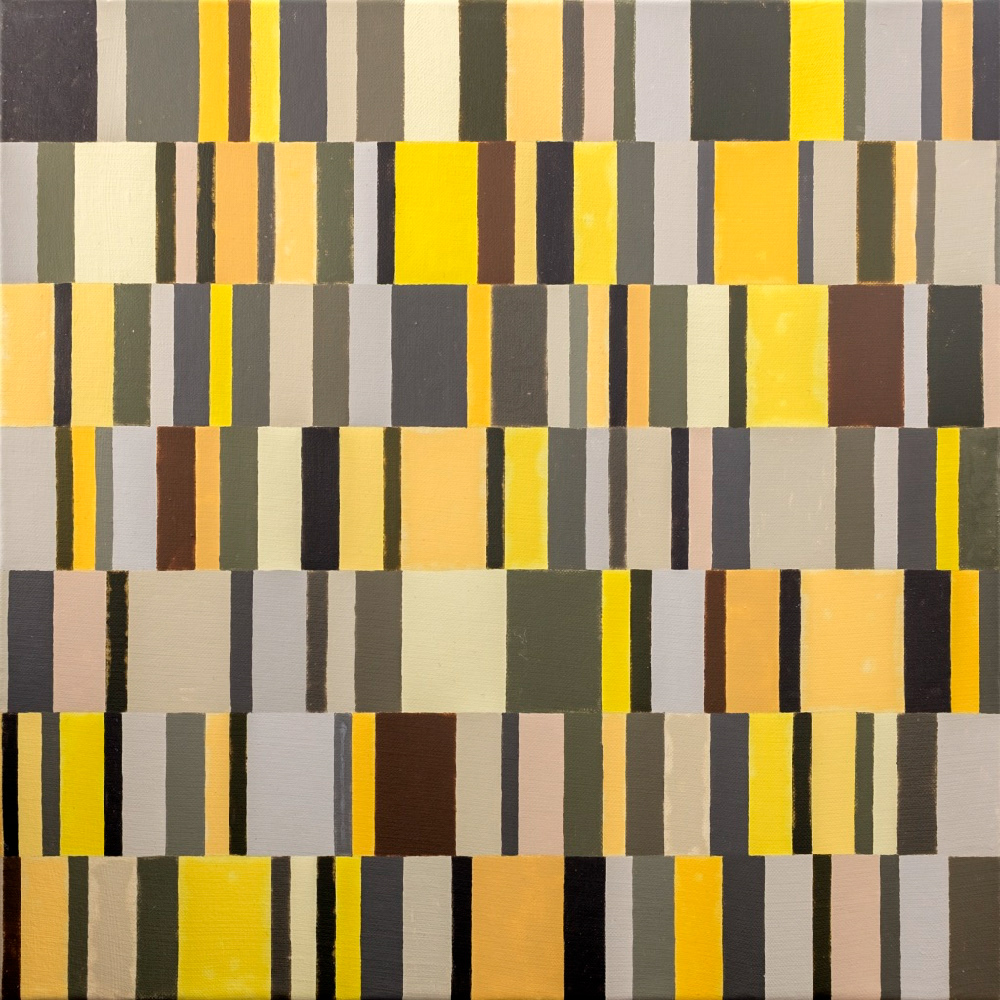

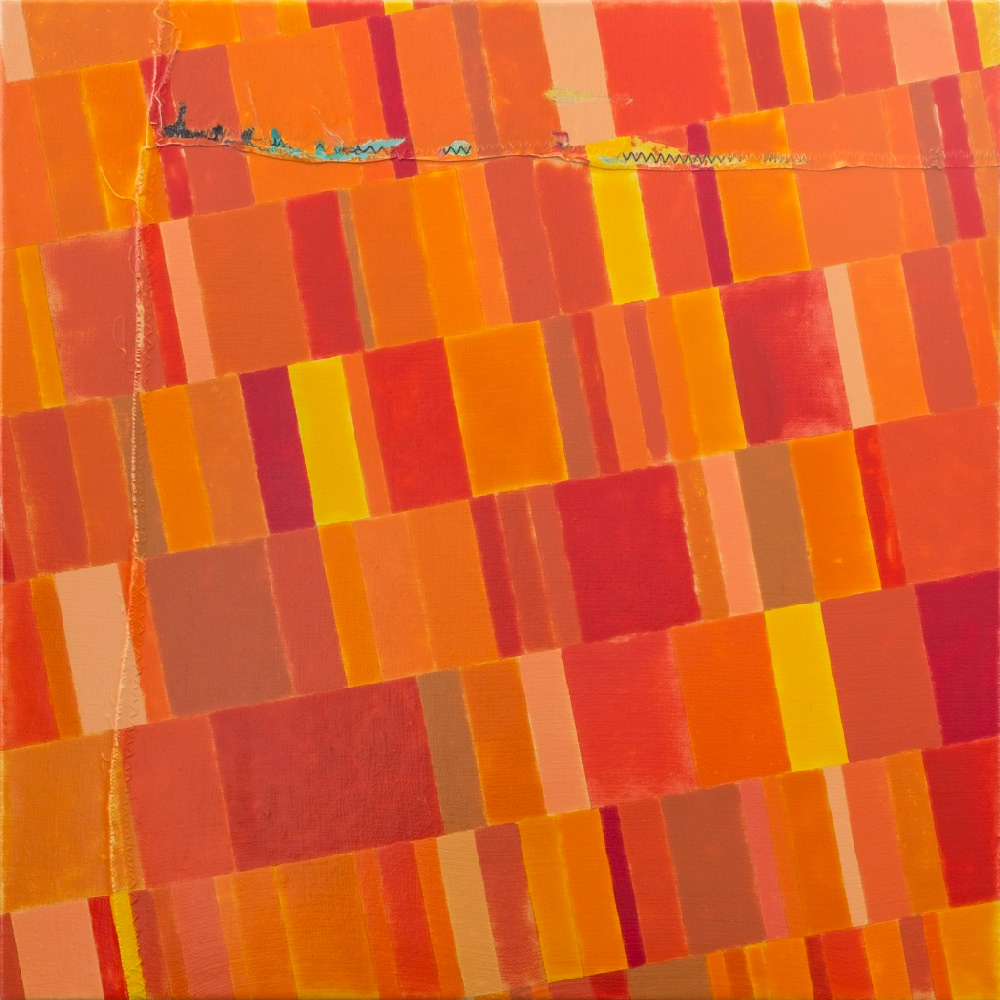
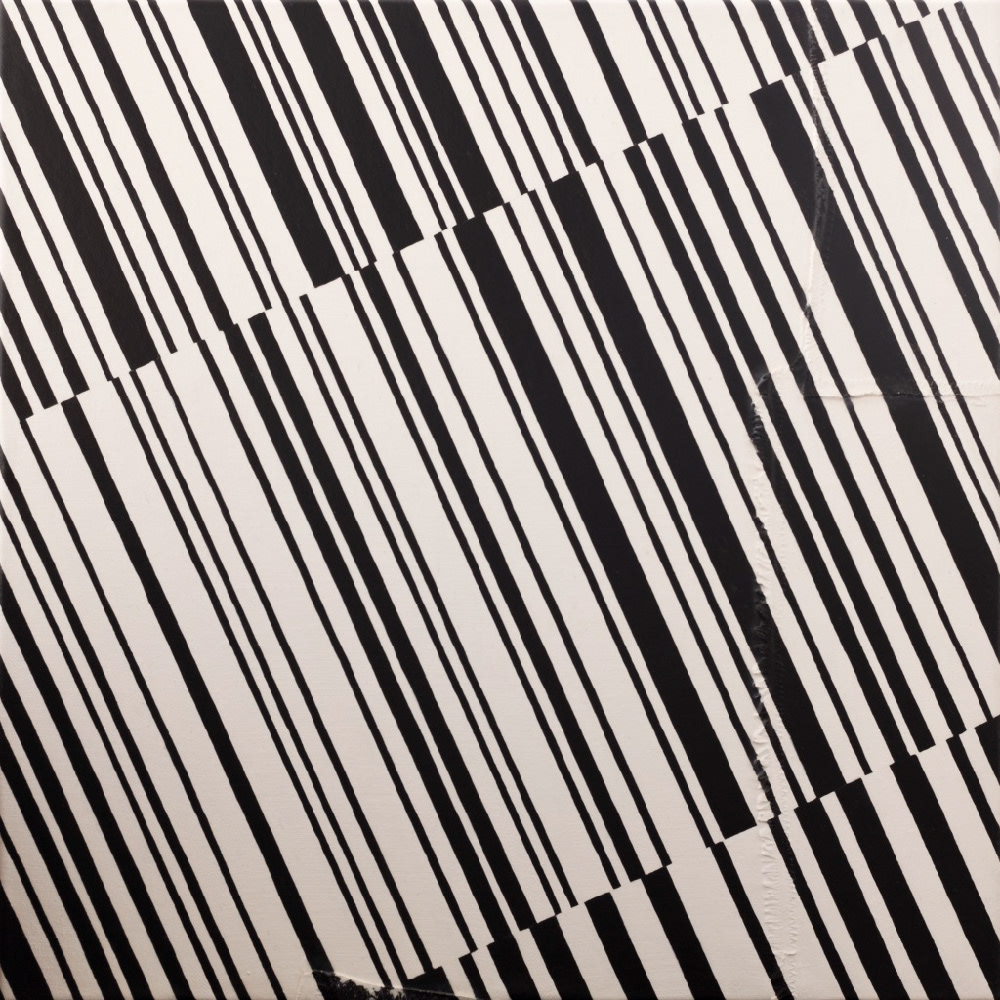

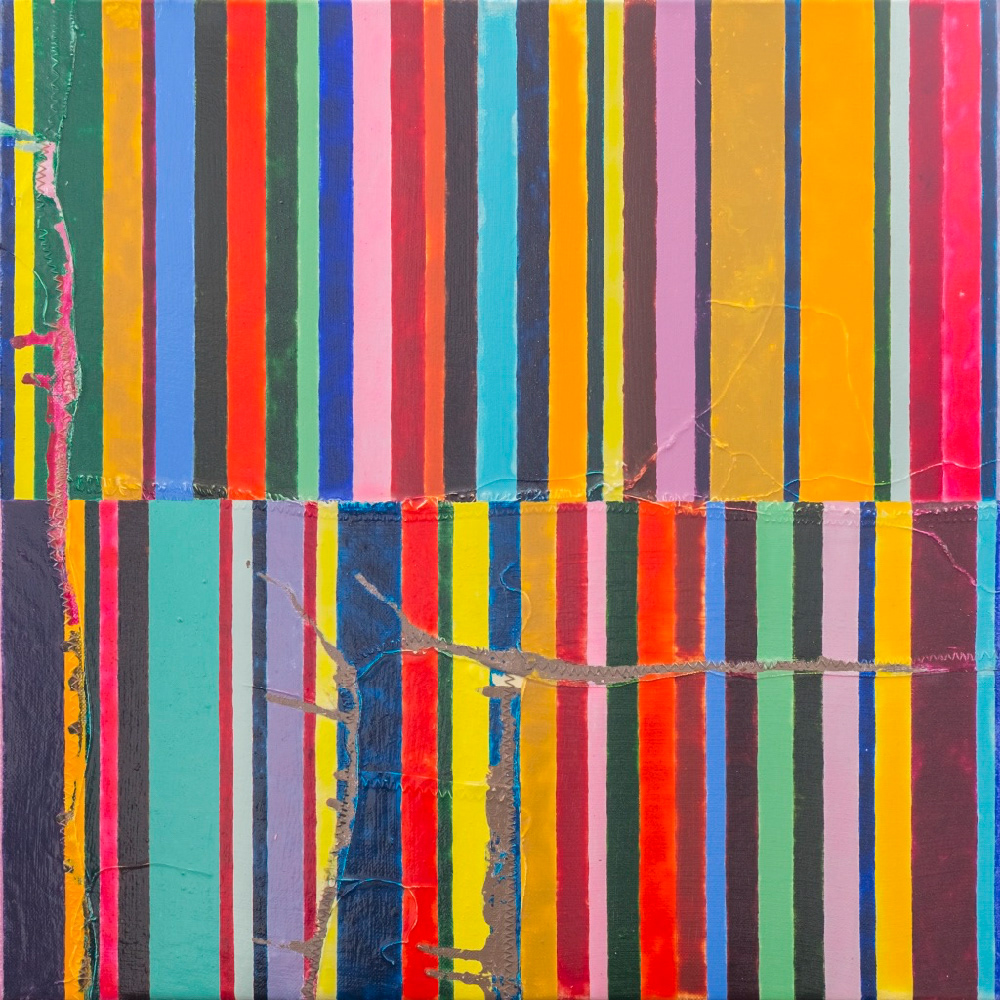
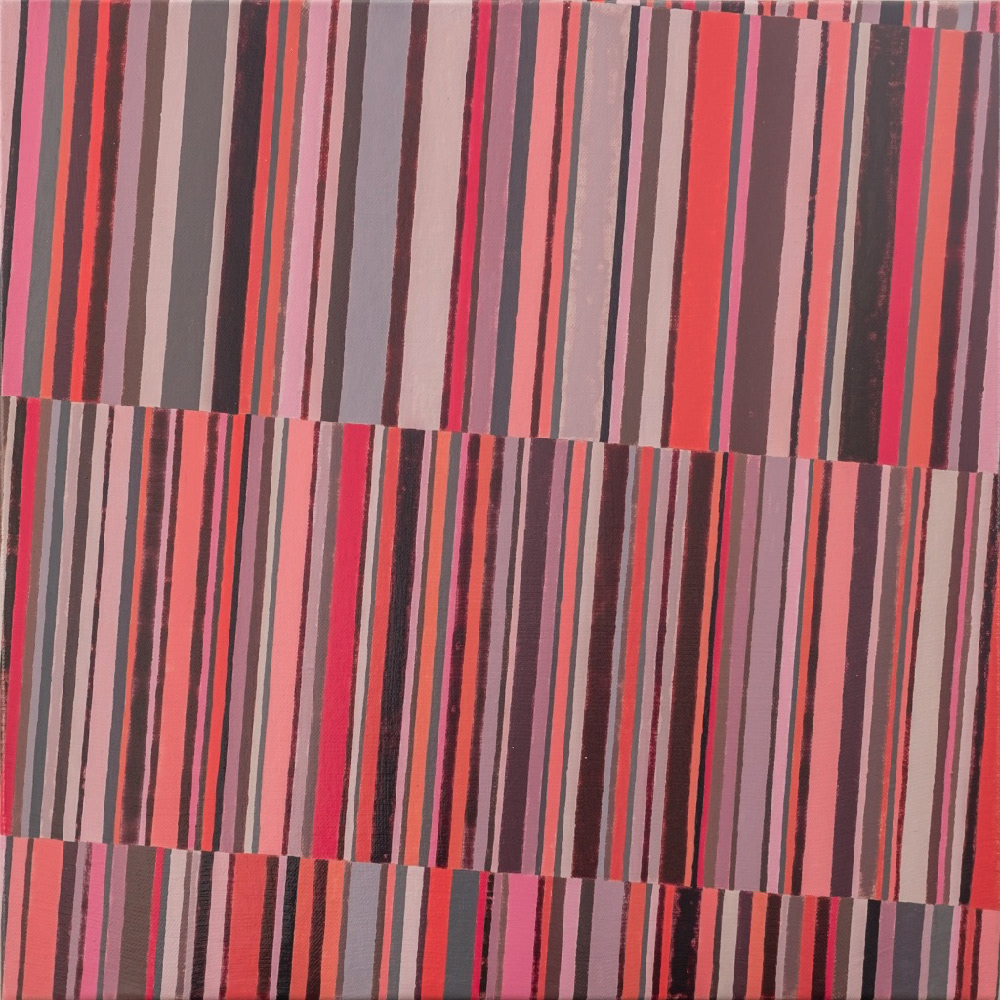
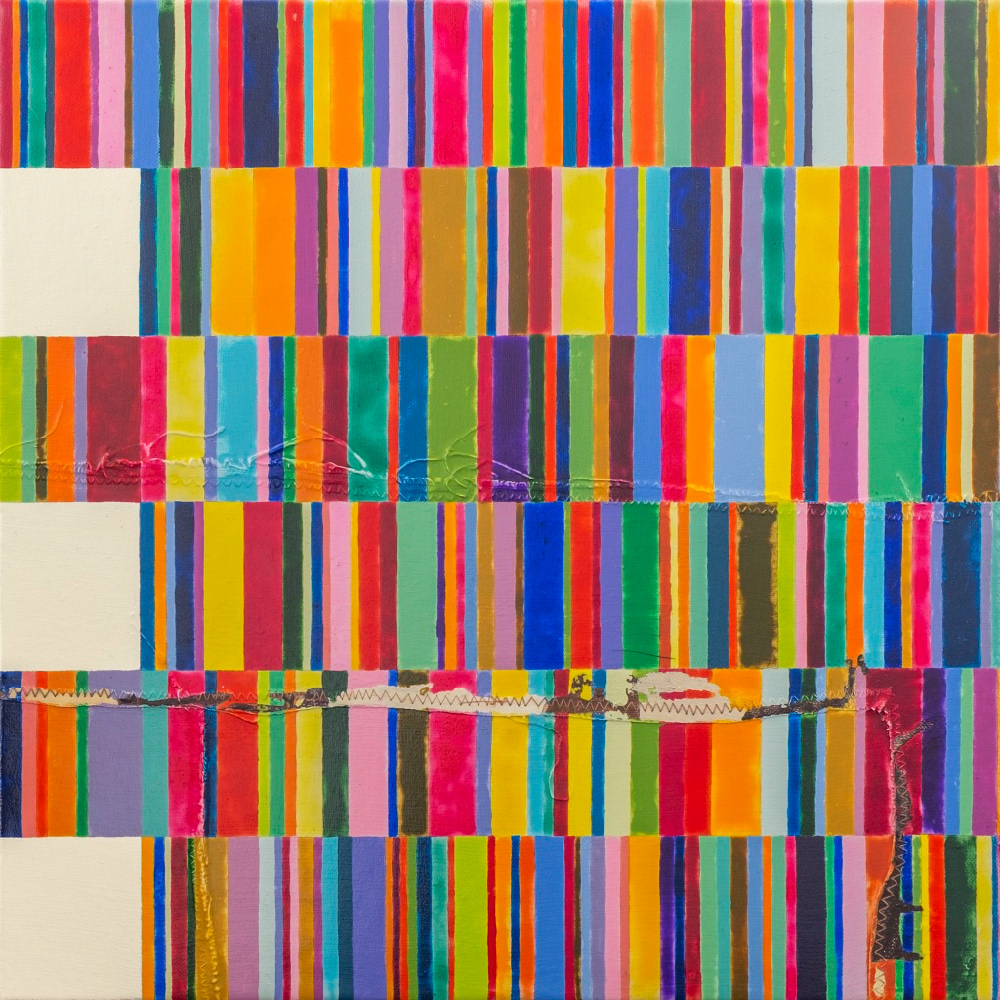
This work was conceived in response to a call for project for the "Bento", a truck that presents temporary exhibitions all over Yonne, a French county. The inside left and right panels have different lengths, and the back can also be used. I created 3 large files for each from the 3 parts in Allen Ginsberg's famous and enormous "Howl" poem. I excerpted 10 squares at various sizes and orientations from those panels, and reproduced them on small 50x50 cm canvasses that are supposed to be hung over the prints. Finally, a reading of the poem by Ginsberg himself loops during the opening hours.
In 2017, my project was not selected for the truck, and the canvas prints were not actually produced until my solo exhibition of early 2023, where they were adapted for the quite bigger walls of the gallery. Sin ce these canvas prints are tailor lade for a unique location, they only serve once. I have thus decided to up-cycle the canvasses and to transform them into bags and the like (project in progress).
The making of this work was documented day by day in a facebook album.
Cette œuvre a été conçue pour répondre à un appel à projets du « Bento » un camion artistique qui présente des expositions temporaires à travers le département de l'Yonne. Les côtés gauche et droit ont des dimensions différentes, et on peut également utiliser le fond. J'ai créé un gros fichier pour chaque panneau, qui correspond aux trois parties du célèbre et gargantuesque poème d'Allen Ginsbarg, « Howl ». 10 carrés, à différentes tailles et orientations, ont été extraits de ces fichiers et reproduits sur 10 petites toiles de 50x50 cm qui doivent être accrochées par dessus les bâches. Le tout est complété par une lecture du poème par Ginsberg lui-même, qui tourne en boucle pendant les horaires de présentation.
Mon projet n'avait pas été retenu en 2017 et c'est seulement en 2023, pour une exposition personnelle, que j'ai adapté les fichiers aux murs nettement plus grands de la galerie et qu'ils ont pu être imprimés à ces nouveaux formats. Comme les bâches sont prévues pour un lieu unique, elles ne servent qu'une seule fois, et j'ai donc imaginé de les « upcycler » en les transformant en sacs (projet en cours).
L'intégralité du processus est détaillé au jours le jour dans un album facebook.
POETRY #6: T.S. ELIOT
2019, acrylics on canvas, 94x156, 112x156 and 102x156 cm
I used the famous poem "The Love Song of J. Alfred Prufrock" and converted, as previously each line to a barcode. This is combined with a black and white portrait of Eliot, where I used random bright colors inside the "black" areas of the portrait, whereas I kept the correct aspect of the barcodes in the "white" areas.
J'ai utilisé le poème « The Love Song of J. Alfred Prufrock », en convertissant chaque ligne an code-barres. Ceci est combiné à un portrait en bichromie de l'auteur. Dans les portions en noir du portrait, j'ai peint les barres avec des couleurs aléatoires, tandis que j'ai respecté les codes-barres dans les portions claires.
POETRY #7: Brautigan
2022, acrylics on paper, 9 x 50x70 cm (9x 60x80 cm with frames)
Even though for practical reasons the 9 paintings that interpret each of the 9 parts of Richard Brautigan's "The Galilee Hitch-Hiker"poem are shown here as a grid, they have been conceived as a continuous line, as a dripping of paint was first thrown on the row of 9 sheets before I started painting the barcodes. Each painting has a specific intent with a particular set of rules that define the colors that are used.
Pour des raisons pratiques, les 9 peintures qui correspondent aux 9 parties du poème "The Galilee Hitch-Hiker" de Richard Brautigan sont présentés ici sous la forme d'une grille, mais elles sont en réalité conçues comme une seule ligne : un dripping de peinture a été projeté sur la rangée de feuilles avant d'en entamer la peinture. Chaque peinture possède un jeu de règles intrinsèques qui déterminent les couleurs qui y sont utilisées.